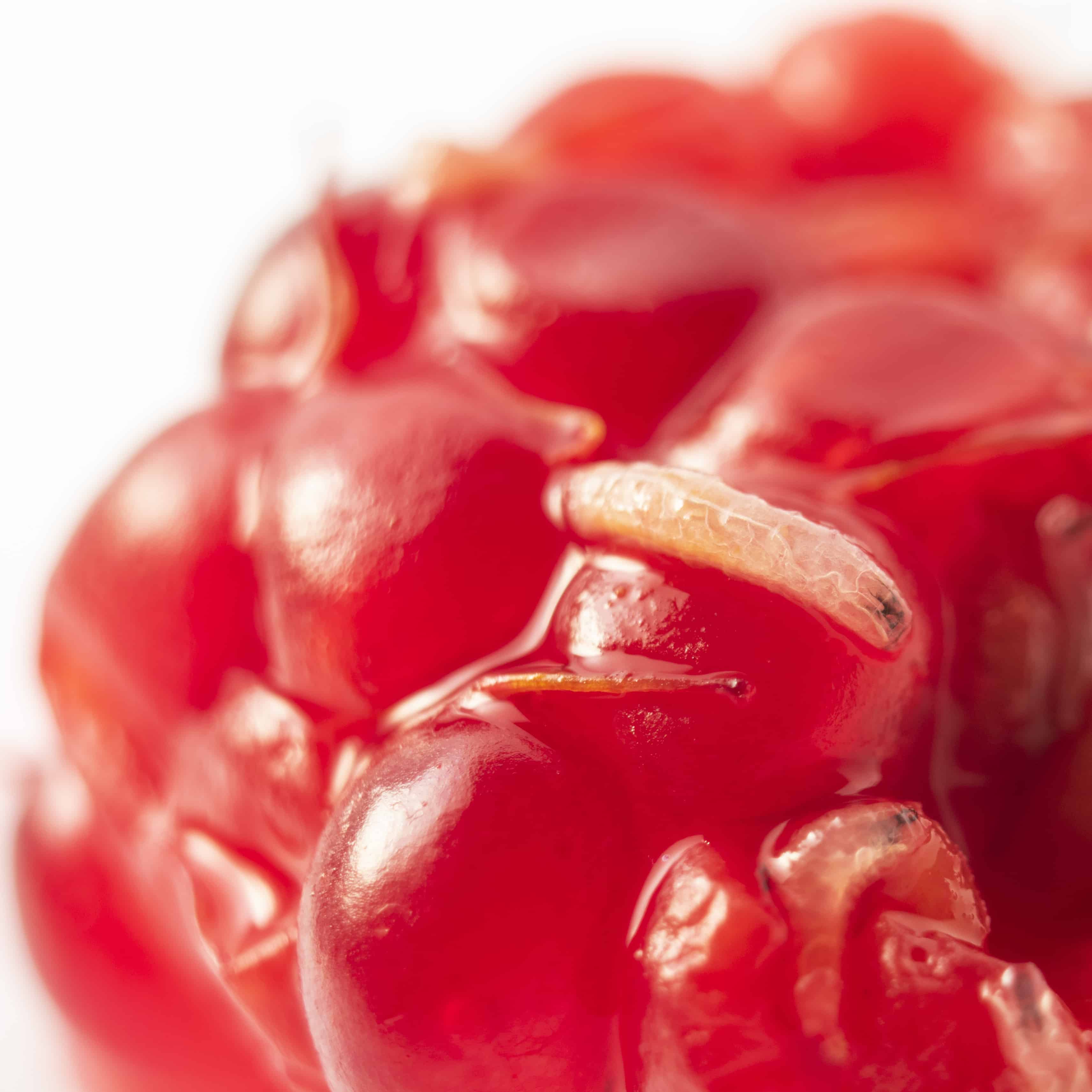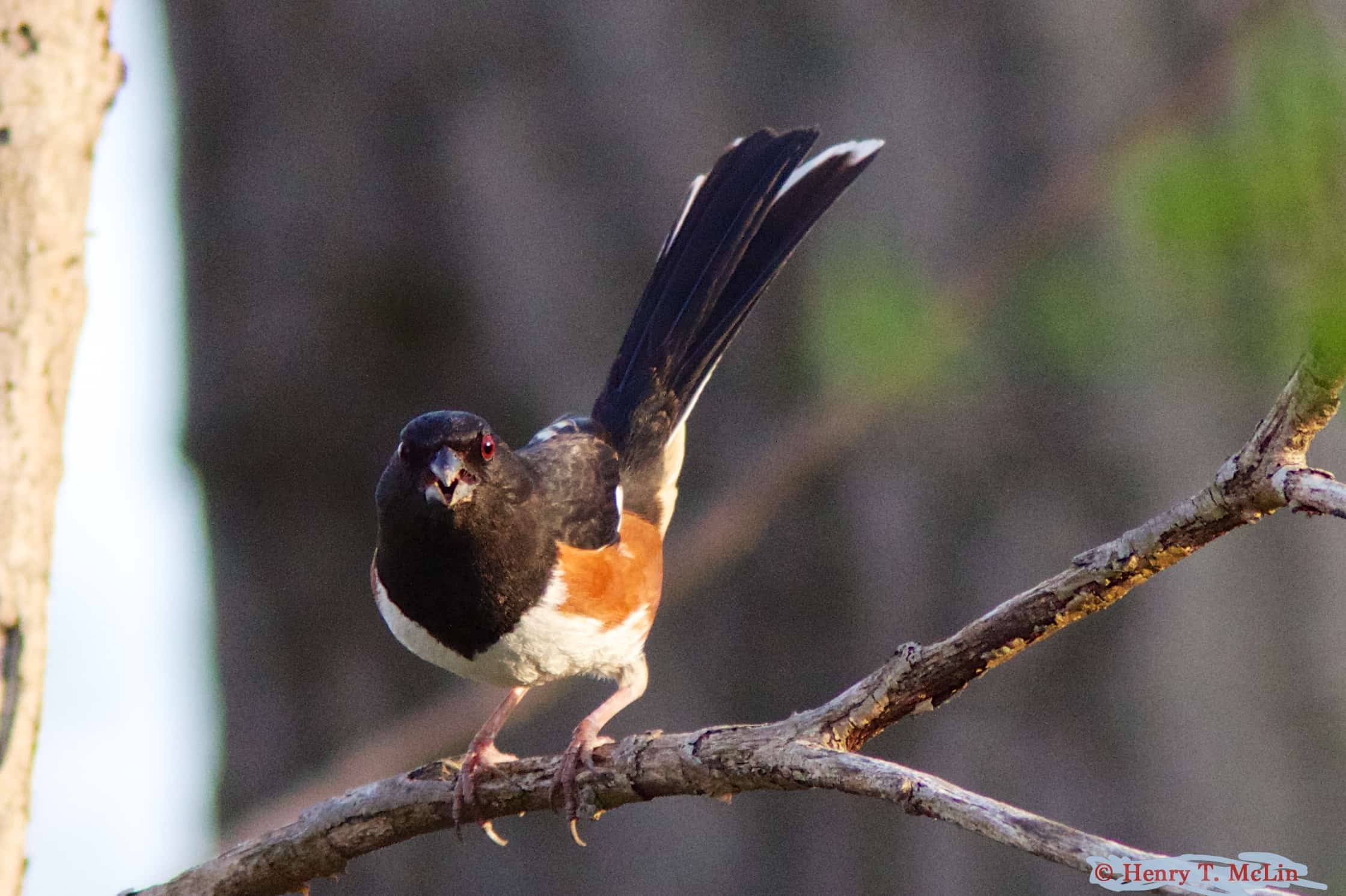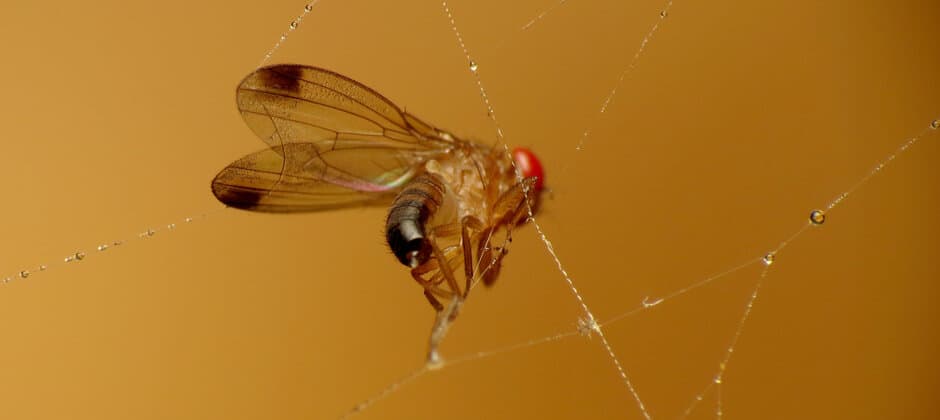Share this article
TWS2021: Do invasive fruit flies affect bird abundance?
Many studies focus on the effects of insect pests on forest vegetation. But new research shows that spotted wing drosophila (Drosophila suzukii), originally from Asia but now found widely in North America, may reduce food resources for fruit-eating birds. On the other hand, the insects may actually increase arthropod food resources for insectivorous birds.
“Since it was introduced in 2008, spotted wings have become a significant pest of many soft-skinned fruits, causing entire crop failures for agriculturally produced fruits like blackberries, cherries, peaches and blueberries,” said Daniel Roche from West Virginia University in a presentation at The Wildlife Society’s virtual 2021 Annual Conference.
Roche and his colleagues surveyed birds, fruit flies and fruit abundance at 21 sites in regenerating timber forests in the Alleghany National Forest, the Clear Creek State Forest and state game lands in Pennsylvania. They conducted mist net surveys in July and September of 2019 and 2020, capturing fruit-eating birds like cedar waxwings (Bombycilla cedrorum), eastern towhees (Pipilo erythrophthalmus), and ovenbirds (Seiurus aurocapilla). They also captured insectivorous species like American redstarts (Setophaga ruticilla) and hooded warblers (Setophaga citrina).
Using traps, they captured the spotted fruit flies around the mist nests and characterized the type of fruit trees and environment around them.

Spotted wing drosophila parasitize soft-skinned fruits. Credit: Peter Coffey
The researchers found that the Allegheny blackberry (Rubus allegheniensis) was the dominant fruit in the area, accounting for 90% of all fruit the team encountered. Their research showed that these fruits ripened at the same time as the fruit fly abundance peaked in mid-August. Spotted wing abundance dropped off after that period.
“The heavy parasitism and dramatic rise in spotted wing trap captures appears to be the result of large blackberry crop ripening,” Roche said.
When there were plenty of blackberries around, the effect of the fruit flies seemed diluted. But limited amounts of the fruit seemed to concentrate them to that area.
“Blackberries may be able to avoid heavy parasitism by producing a larger fruit crop,” Roche said. “Not only would larger crops support more [fruit-eating] birds, but they may also reduce the risk of encountering parasitized fruits for the birds.”

Eastern towhees saw some of the largest impact in areas that had high spotted wing infestations. Credit: Henry T. McLin
The results showed that fruit-eating birds, in general, were less abundant in areas where there were more of the invasive fruit flies. But out of the six species they examined, eastern towhee declines had the strongest correlation to fruit fly abundance. The researchers think that species may have driven the trend Roche and his colleagues saw for all fruit-eating birds.
“Swarms of spotted wing, which we observed while mist-netting, may have been annoying to eastern towhees while trying to foraging,” Roche said. “Or encountering spotted wing on fruits could have made fruits undesirable, decreasing consumption of fruits and leading to declines in birds.”
On the other hand, numbers of ovenbirds increased at the same time as the numbers of spotted wing drosophila.
Roche said that all of the effects of the invasive flies are still unclear, but that it’s also possible that increased fruit fly infestation may provide more nutritional benefits—birds that eat fruits may also gain protein from the larvae they ingest with the blackberries. The increased number of fruit that drops to the ground around areas of large spotted wing infestation could also result in an increase in ground arthropod abundance, which could feed some insectivorous bird species.
More work would need to be conducted to pick apart these various potential relationships, Roche said.
Header Image: Spotted wing drosophila have spread widely through North America. Credit: Katja Schulz








